

Damion Smy
Boxy new KGM Musso unveiled to take on HiLux and Ranger ahead of Australian launch
11 Hours Ago
This was the showdown rally ace Chris Atkinson had been waiting for! Two machines born out of competition in the World Rally Championship

Performance Editor


Performance Editor
This was the showdown I have been waiting for. Two machines born out of competition in the World Rally Championship.
One was king of the stages but is well past its glory days, having remained fundamentally unchanged for the better part of 30 years.
The other is a new kid on the block, surrounded by the buzz of being a homologation special linked directly to Toyota’s current WRC efforts.
Why the excitement, why the hype? This is exactly what Toyota, Subaru, Mitsubishi, Ford etc. did in the ‘80s and ‘90s. It’s because this is what we want as enthusiasts, though we haven’t been given it for far too long.
But has anything really changed in 30 years? What are the differences? Is the hype justified? We are about to find out, on road and track.
Be sure to watch the video, too.

The Subaru WRX STI has been criticised for its on-track performance, and the Toyota GR Yaris applauded for its driver engagement and connection.
Yet every time I see someone on track with the Subaru, they are overdriving it and exploiting the negative aspects instead of driving correctly and getting the most out of it.
Many people will soon find out you can do exactly the same with the Toyota GR Yaris if you’re not careful.

The great thing is, both cars offer excellent feedback and driver connection, so it is down to the driver to make the correct decisions to get the most out of them.
Our test day started off overcast at a slightly damp Queensland Raceway, which made my eyes light up!
What perfect conditions to see how these rally-bred weapons could adapt. It was always going to dry out and lap times improve, but I had no idea who would have the upper hand.
This is going to be close!

I actually really enjoy driving the Subaru WRX STI on the road. It still is an absolute blast on a nice twisty section of road and can comfortably carry four people and some luggage.
Space isn’t the Toyota GR Yaris’s friend, but is that really why you are buying a car like this? As a driver you feel a connection to the car, and its playful nature keeps a smile on your face. That’s the most important thing.

Subaru’s 2.5-litre turbocharged four-cylinder Boxer engine makes 221kW of power and 407Nm of torque, whereas the Toyota’s 1.6 litre three-cylinder turbo pushes out 200kW and 370Nm.
These are two very different powertrains with reasonably similar numbers.
The Toyota GR Yaris just edges ahead on power-to-weight ratio: 155kW per tonne vs 144.3kW/t for the Subaru.

Acceleration wise, I did a quicker time in the GR Yaris. This was not the focus of the test and we had just a couple of attempts, but the Toyota was a bit easier to launch with its wider torque curve. Both claim 5.2 seconds on the spec sheet.
The GR Yaris sounds great and loves living up in the top of its rev range, which in a way makes it fun and a challenge to drive since you really feel like you are pushing it to the limit. Although it doesn’t have as much torque or power as the Subaru, the peak torque actually starts lower at 3000prm and finishes higher at 4600rpm.
The WRX STI has a more rounded torque curve with a definite peak at 4000rpm, which is fine if you fall into the middle of it, but really hurts you if the revs drop below 4000rpm.

Response is a bit of a problem with both cars, but on the track you can deal with it as you know what gear to be in and you can keep the revs up.
Actual acceleration-wise on the track, once you are moving it’s very close between the two, and it made no big difference to the end result. They both sound great in completely different ways and offer impressive but not mind-blowing performance.
| Subaru | Toyota | |
|---|---|---|
| Displacement | 2.5-litre | 1.6-litre |
| Cylinders | 4 | 3 |
| Power | 221kW @ 6000rpm | 200kW @ 6500rpm |
| Torque | 407Nm @ 4000rpm | 370Nm @ 3000rpm |
| Driven wheels | AWD | AWD |
| Gearbox | 6MT | 6MT |
| Weight | 1548kg | 1320kg |
| Wheelbase | 2650mm | 2560mm |
| Length | 4595mm | 3995mm |

The Yaris was a bit more nervous under brakes and that comes back to the smaller chassis and also the lack of front and rear differentials in this version (which I will get to) to help.
I had no issues with the brakes with either, but at the same time I wasn’t doing long enough runs to really test the durability of them. Both have a nice firm pedal that inspires confidence when you step on it.
The data shows slightly in the favour of the Subaru, with one of the shortest and quickest 100-0 times of 2.57 seconds in 35.87 metres, versus 2.9 sec in 37.7m for the Yaris.
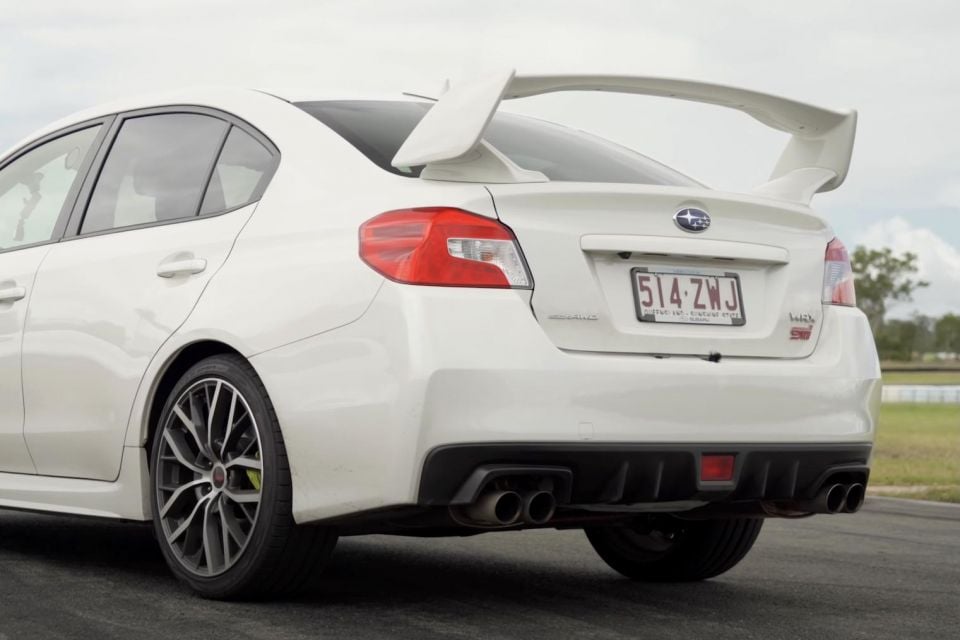
For me the difference really comes down to tyres and differentials.
I had the ability to be able to modulate and control the release of the brakes on the way into the corner and didn’t struggle with the ABS interfering at all with either.
Both have a real handbrake that works, so a big thumbs up for that.

Each car’s chassis has a tendency to understeer, although they do it in slightly different ways.
Subaru has always been a bit too cautious with the balance of the STI. It is easy for people to make this car understeer, and the result of almost any mistake in a person’s driving will lead to just this.
The Subaru WRX STI chassis is actually very good and has a lot of positive elements. It is reactive and supportive and has excellent traction and feedback, but the fundamental balance is towards understeer and once in this position, it takes a lot of restraint to unwind it.
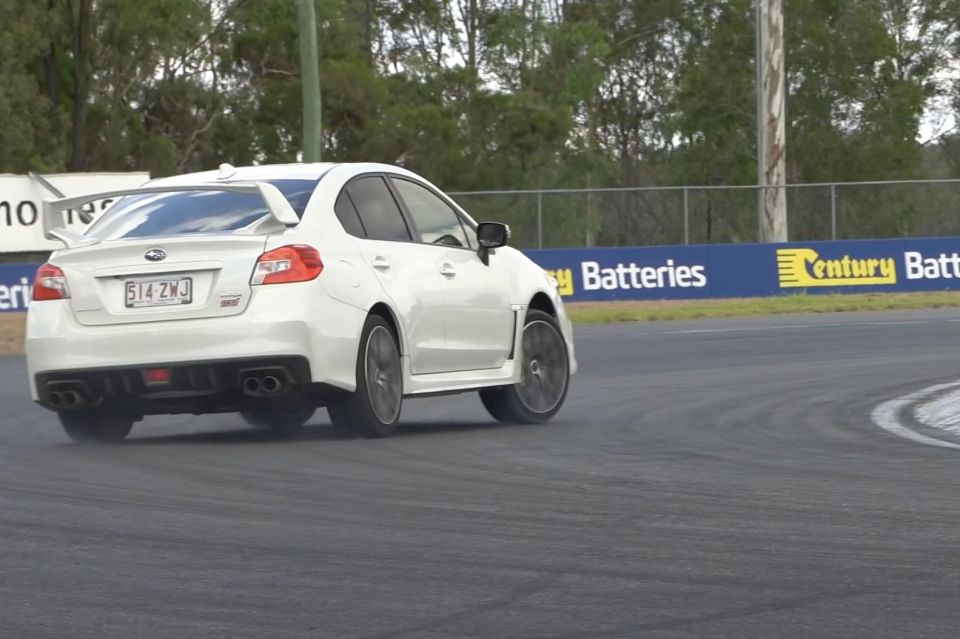
The Subaru WRX STI chassis is actually very good and has a lot of positive elements. It is reactive and supportive and has excellent traction and feedback, but the fundamental balance is towards understeer and once in this position, it takes a lot of restraint to unwind it.
Now with a very controlled release of the brake pedal and just the right amount of steering, you can get the Subaru WRX STI to rotate in the mid-corner. Also, with the right amount of energy and some hand brake use, you can hold a pretty epic AWD drift. So, it has the potential!
The Toyota GR Yaris is a bit more nervous but I actually expected more, especially late in the corner.
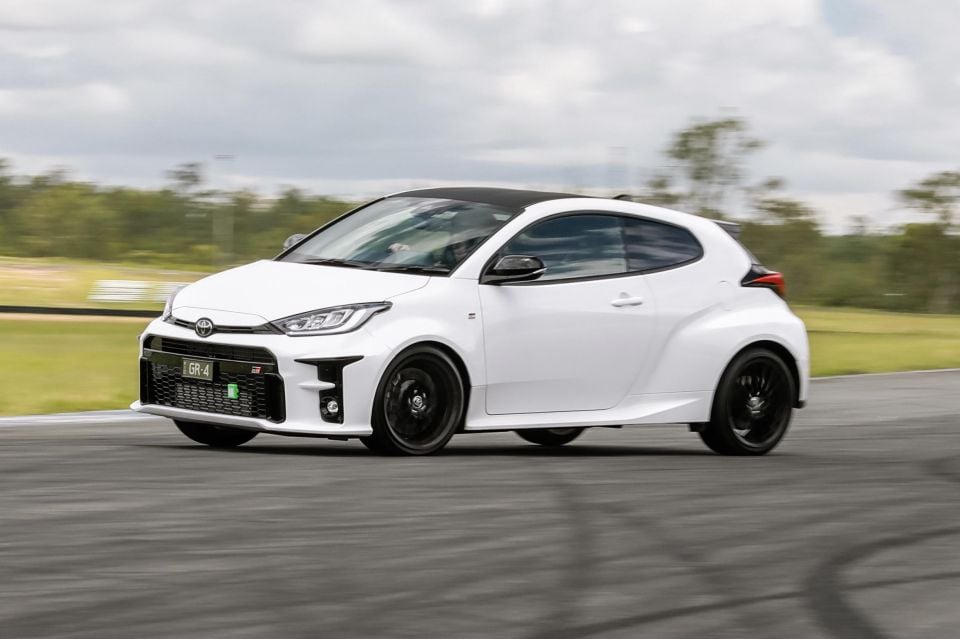
Dynamically the Toyota is almost there, but just didn’t quite settle to a nice balance during the middle phase of the corner. You can get it to slide a little when you try and rotate the car, but you have to be spot on with your inputs and you can easily lose that balance.
If you try and be overly aggressive you can lose front grip easily and although some of this can be chassis-related, a large part is because of the tyres and lack of front and rear LSDs in this version. You cannot recover it with power, it only makes the problem worse.
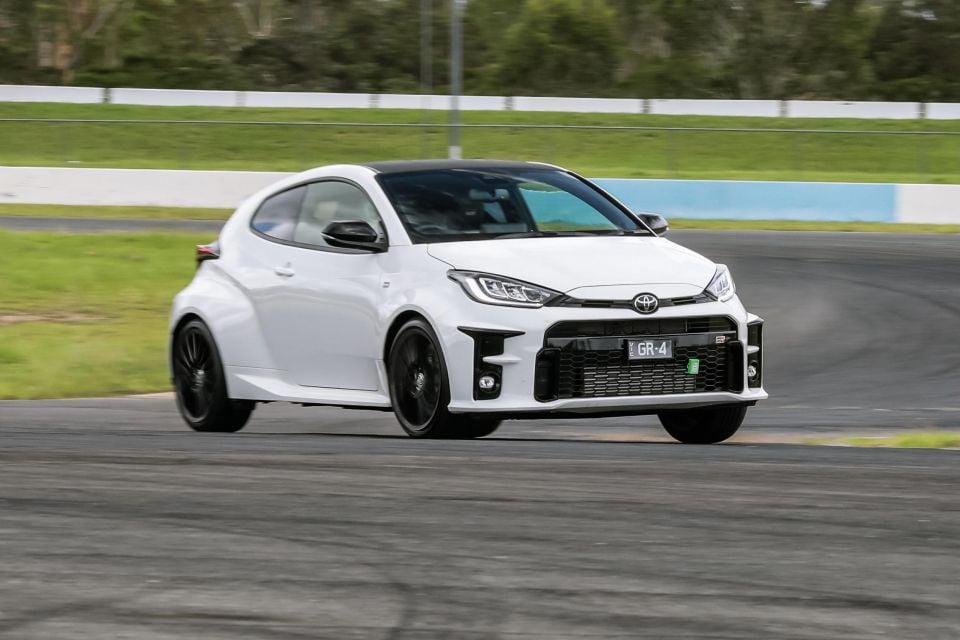
In an ideal world I would have liked a more dominant front end while loaded, which can actually be said for both cars. Initial response is very good, it works well on short corners and quick changes of direction, but on longer tightening corners it misses out just a bit.
If both Subaru and Toyota could allow their cars to rotate a bit better, then rely on the AWD grip and traction to recover the balance, it would be absolutely awesome.
They just miss the mark and I am actually not sure if it is safety or fundamentally design induced, but I am leaning towards the safety element and I wish they would take more risk with the setups.
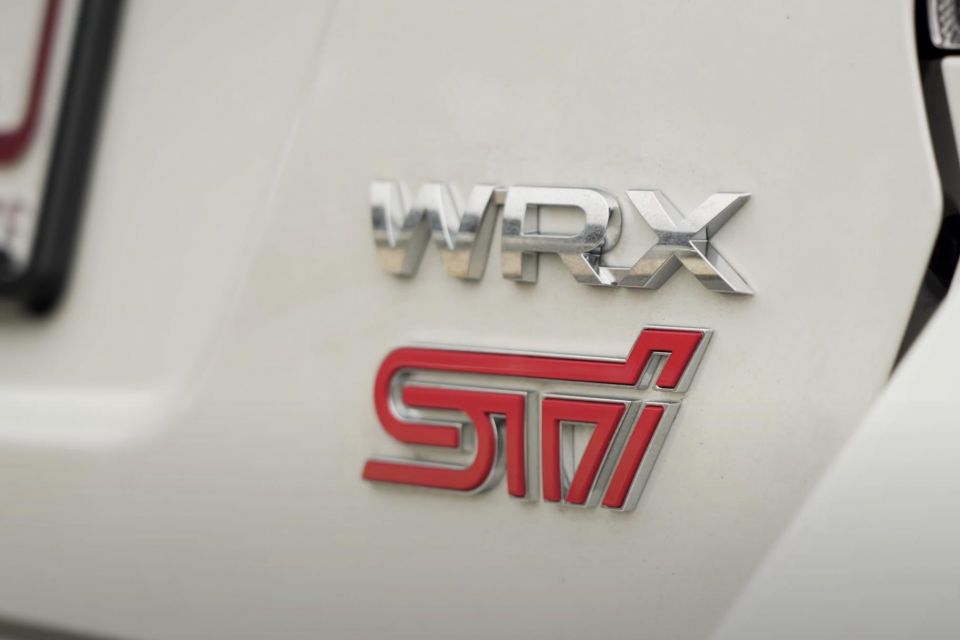
Where expert car reviews meet expert car buying – CarExpert gives you trusted advice, personalised service and real savings on your next new car.
Another similarity here. Both are all-wheel drive (AWD) and have six-speed manual transmissions.
Both work fine, although it can become a bit more difficult to shift when the gearbox oil temp rises, which was slightly worse in the Yaris.
Standard gearbox oil is designed to work from cold, and as soon as you hit the track it can easily exceed its optimum temperature. You can fix this with a quick oil change, but don’t expect it to be as friendly on a cold morning.

The actual gear ratios of both cars are really well matched to the engines. This is more important for the Subaru WRX STI, because it has to nail the middle of the narrow torque curve for the engine to perform. It does this on every shift and you can see that a lot of effort has gone into that.
The AWD systems are a little bit different.
The Toyota GR Yaris has a clutch pack distributing the torque front and rear, and you have the ability to switch between Normal, Sport and Track driving modes.
Normal mode sends 60 per cent of torque front and 40 per cent rear. Sport mode sends 30 per cent front and 70 per cent rear, making the car a bit freer early in the corner, but prone to losing traction on slow corner exit. Finally Track mode is 50:50, and was the setup in which I did my best lap times.
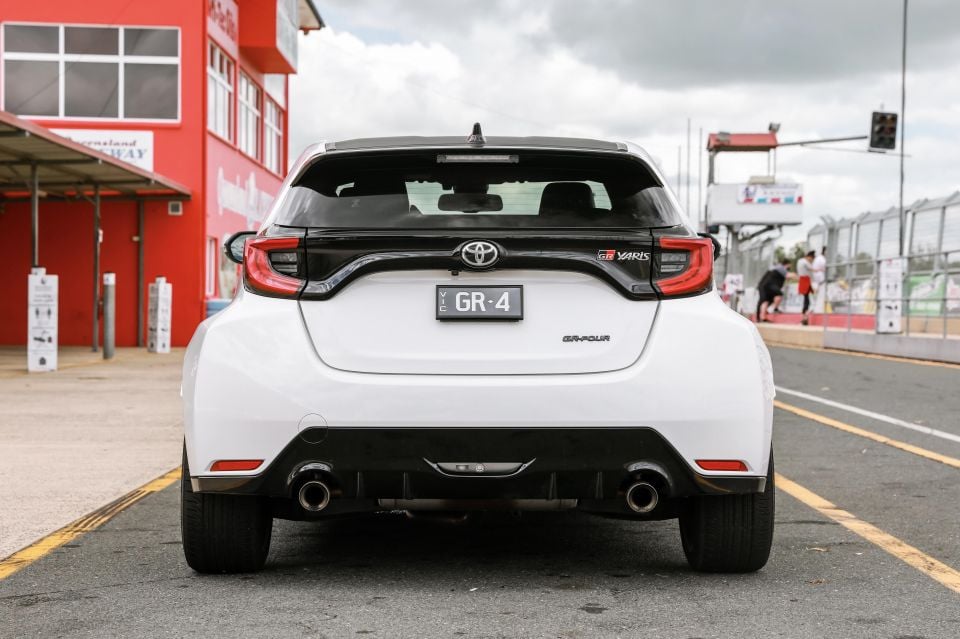
The great thing about this is that it has a noticeable influence on the balance of the car. It was interesting that as the tyres got hot, I was able to do better lap times in Sport mode as it was easier on the front tyres.
This really reminded me of what I could do in the old active differential WRC days, adjusting the centre diff during stages depending on tyre and road conditions. Very cool!
The Subaru WRX STI uses the DCCD centre differential, which allows different levels of electronic locking to the 41:59 mechanical torque split. This is great for adjusting the balance of the car depending on the conditions.

The front and rear differentials are mechanical LSDs (limited-slip differentials), which work nicely and offer more than enough locking.
In theory the more slippery the conditions, the more you would go towards the most locked setting, and more open with good grip. But this is also very track dependant.
Very rarely would you go fully locked on tarmac. It really ties the car together and helps massively on braking and exit, but you have to make sure you don’t overdrive the middle of the corner.
Unfortunately this version of the Toyota GR Yaris didn’t have front and rear LSDs as fitted to the Rallye Edition.

When the tyres didn’t have too much heat in them, I really think the difference wouldn’t be much. As soon as they got hot, the time dropped away, and it wasn’t as easy to drive or get a good time out of.
Due to that fact that the Yaris doesn’t have locking across the front and rear axles, any attempt at a big AWD slide or gymkhana style donuts, is impossible. For me this is a key attribute for a car like this, and I can’t wait to see how the Rallye performs.
The centre diff in both cars is far from a gimmick and can really transform the balance in different conditions. The Subaru wins this one, but only because of the LSDs!

I can almost write the same thing for both cars. They are soft enough to offer excellent traction, but then have support when you lean on it or hit in bumps or curbs. They don’t fall over at any point and do that without being too firm.
The Toyota GR Yaris does move around more, and I think that actually suits the experience you want from a car like this. It is not trying to be go-kart-rigid, it wants to be flexible and playful.
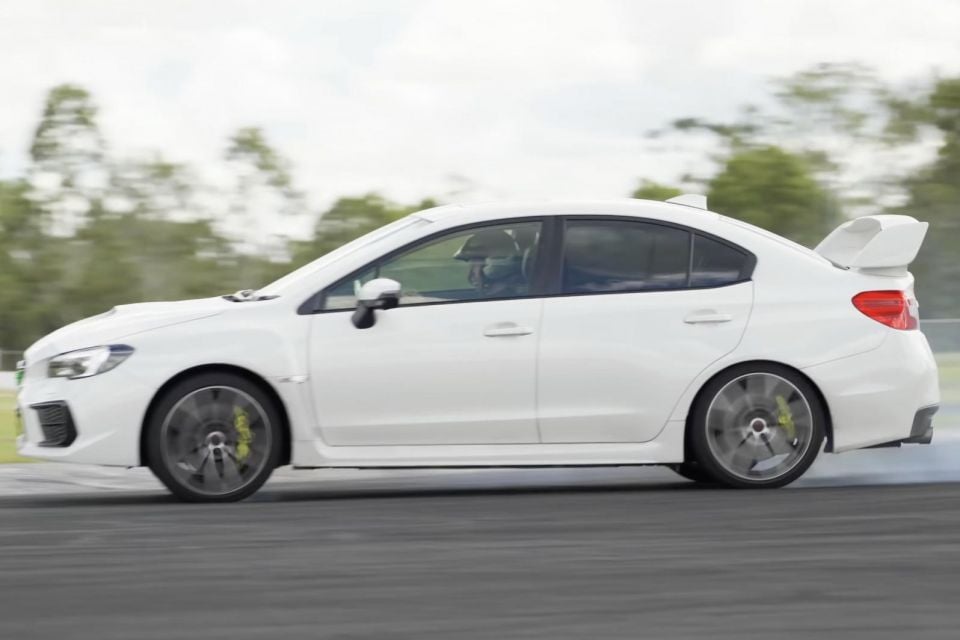
The Subaru WRX STI is slightly firmer, but not by much, you still have the ability to attack curbs and bumps.
The key take away is that they are confidence inspiring. They do it all without upsetting the balance, staying continually calm and offering exactly what you want from a rally-style vehicle.
You might start to see a pattern here! The steering of both is excellent and offers all the feedback you need to make the right decisions. No problems in this area for me and nothing to separate them.

Ok! Now we have a difference and what actually might be the deciding factor in this battle. This is so often the case and can make massive time differences. Grip is like free time, if you bolt on less grip, the inevitable happens.
I can’t say the Subaru’s Yokohama Advan Sport V105 245/35 R19 tyres are amazing, but they worked reasonably well on the track. They had decent durability and the grip was pretty good. If you are looking for lap time, there are definitely quicker options out there, but they stood up to the test well.

The Toyota’s Dunlop Sport Maxx 225/40 R18 tyres are a little disappointing for the GR Yaris, both with overall grip and endurance. Within one lap after the track dried, the performance started to drop off and it was hard to recover.
Fortunately, it is an easy fix, with a quick tyre upgrade or going for the Rallye edition which has higher spec rubber as standard. But it just lets the Toyota GR Yaris down slightly.

I did all my laps with traction control and stability control (VDC for the Subaru) off.
These cars have plenty of grip and traction and never once felt like there would be an advantage to having them switched on during track work. Obviously, this depends on your level of experience.
I also ran with the Subaru SI-Drive in Sport Sharp, for the best engine response.

The Toyota GR Yaris’ seating position is good, you feel like you’re sitting a little higher than usual but not too on top of the car. I still felt like I was part of the car and connected and it wasn’t dissimilar to what you would feel in the rally car version.
The steering wheel is a really good size, and I could set it to exactly the position I like.
The seats in the Subaru WRX STI are more than good enough on the track, but I would like something a little deeper, with more of a race car feel for a vehicle like this.
The original bucket seats that came in the early generation WRXs are still one of my favourites, and I would love to see Subaru go back to something similar.

The original bucket seats that came in the early generation WRXs are still one of my favourites, and I would love to see Subaru go back to something similar.
The steering wheel is nice and has good texture and grip, although I would like it to be slightly thinner.
I had no problem heel-and-toeing in either car, finding the pedal positions to be very good as well.
Having the differential controller on the centre console worked fine with both cars, but they could really take it to another level with some dials on the wheel, like we have in race cars.
Neither interior blows your mind, they are just a touch basic and I think a more rally-inspired cluster would have really finished them off.

60.73 seconds vs 61.53 seconds.
It started out so close, with just a few tenths between them.
The Yaris even had a slight advantage, as I had driven it for the single car review just a week before. By lap 4 the Toyota did a 61.53 second time, almost the same as my best from the previous week. This was identical to the Subaru’s lap 3.
But as the temperature started to rise and the grip came to the track, the understeer of the Subaru became less of an issue and bang, two laps back to back with times of 60.73s and 60.78s.
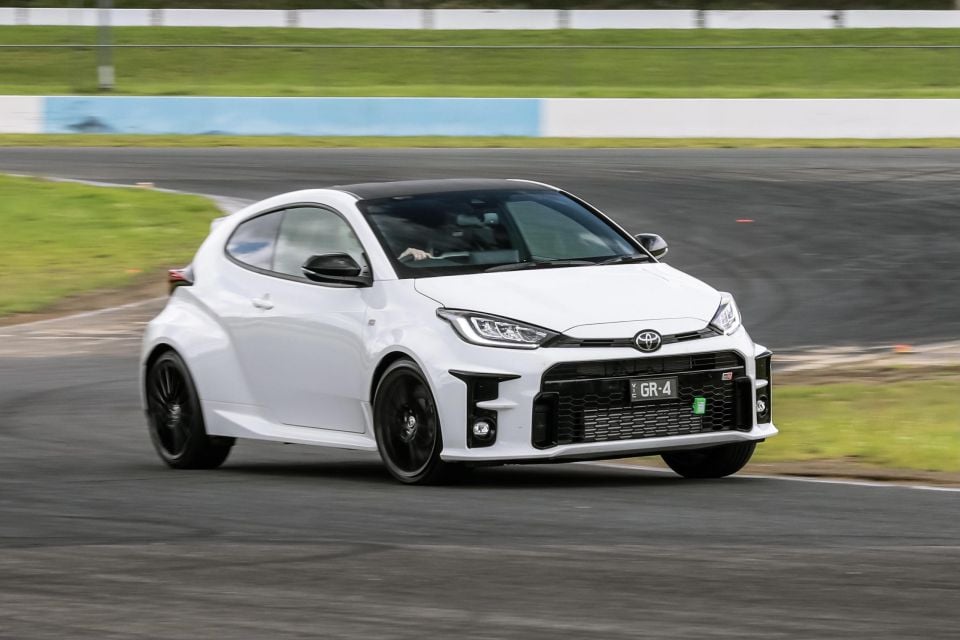
I gave the Yaris one more try, but the tyres had given up and the time was dropping away.
I was actually really surprised by the lap time I achieved in the Subaru. With a package that hadn’t changed dramatically for so many years, my expectations were not that high.
You’re a brave person to write-off a WRX STI, but at the same time you have to know what you’re doing to get the most out of it.
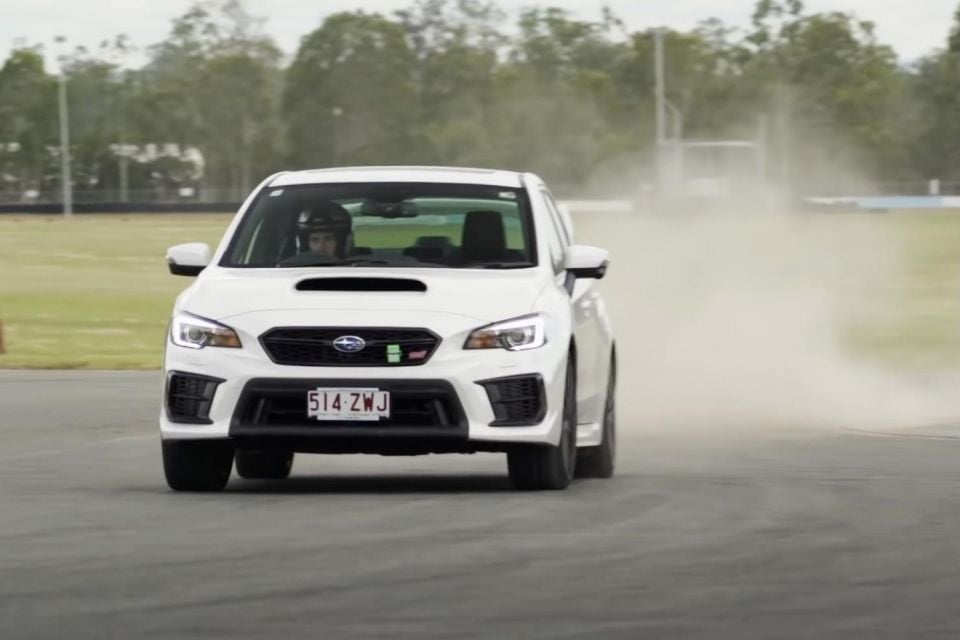
There has been so much hype about the Toyota GR Yaris, and at 61.53s, it is still quicker than the VW Golf R, but my perspective of what it should be capable of was warped by all the noise around it.
Of course, the Rallye version of the Yaris would be a much tougher competitor for the Subaru WRX STI, with better rubber and LSDs.
Ultimately they are both great driver packages that you can have a heap of fun with, on the track or any type or road.

Yes, the Subaru wins on paper and is still close to my heart from the ’90s and 2000s WRC days.
But it is so interesting that what we actually want from cars hasn’t changed that much in 30 years, and it took one of the largest manufacturers in the world to go back to creating brand passion by linking race/rally cars directly to what you can buy, to remind us.
MORE: Lap times and other results leaderboard

Atko’s 3: Subaru WRX STi
Atko’s 3: Toyota GR Yaris


Pros:
Cons:
Pros:
Cons:
Loved this track test? Check out all of Atko’s reviews and comparison tests here.
Share your thoughts with us in the comments below!
Share your thoughts and write a review of a car you own and get featured on CarExpert.


Damion Smy
11 Hours Ago


Damion Smy
12 Hours Ago


Damion Smy
14 Hours Ago


Damion Smy
15 Hours Ago


Damion Smy
17 Hours Ago


Damion Smy
18 Hours Ago